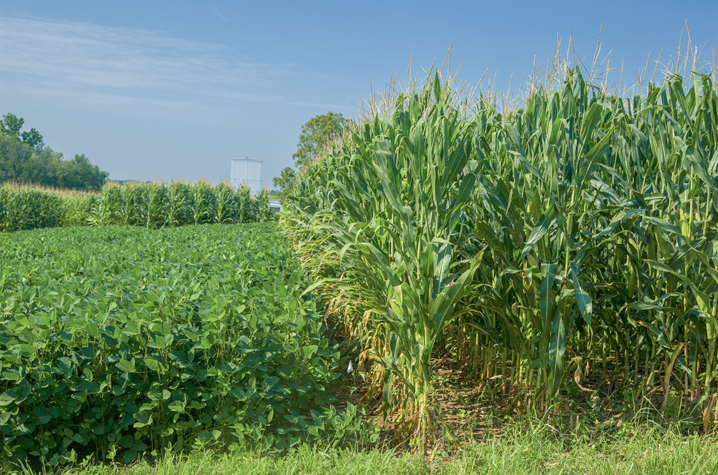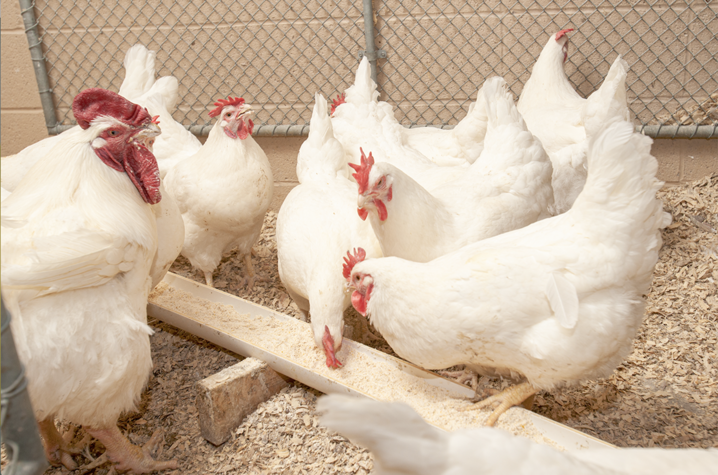Kentucky’s Agricultural Economy Thriving, Record Receipts Expected
LEXINGTON, Ky. (Dec. 2, 2021) — University of Kentucky agricultural economists are predicting the state’s 2021 agricultural receipts will exceed $6.7 billion. If realized, this will be a new record, surpassing the previous record of $6.5 billion in 2014 and the $5.5 billion average over the past five years. They expect net farm income to approach $2.5 billion, which is the highest since 2013.
Economists in the UK College of Agriculture, Food and Environment shared their predictions for the Kentucky agriculture and forest economies during the annual Kentucky Farm Bureau meeting.
Kentucky’s agriculture sectors powered through many challenges caused by the COVID-19 pandemic and are in the midst of tremendous economic growth due to increases in grain exports, strong crop yields and a high global demand for meats. As a result, corn and soybeans are tied with poultry as the state’s top agricultural commodities in 2021. Each comprises 18% of all projected sales.
“Nationwide, grain inventory was lower at the beginning of 2021, and with increased exports, our stocks dropped even more as the year progressed. This led to higher prices throughout 2021,” said Greg Halich, UK agricultural economist. “For the upcoming 2022 crop season, prices are predicted to hold steady or may even increase, but profits will tighten due to rising input costs.”
Corn, soybeans and poultry are followed by equine, which had a strong sales season and has a 16% market share. Cattle is next with 11% of projected sales.
“In 2021, the equine market made a huge recovery, and Keeneland sales were up 35% from 2020,” said Kenny Burdine, UK agricultural economist. “Beef exports are expected to set a record in 2021. After several frustrating years for cattle producers, another decrease in beef cow numbers and continued global demand should lead to improved prices for calves and feeder cattle in 2022.”
Kentucky’s agricultural economy is consistent with national trends. U.S. farm exports will likely finish 2021 at record levels that approach $175 billion. As of September, corn exports have more than doubled, beef exports are up 37% and forest products are up 29% on the year. The U.S. Department of Agriculture is predicting a 23% increase in net farm income, which will only be surpassed by the all-time record high of $123.7 billion set in 2013. In 2020, producers’ incomes increased by nearly 20%, mostly due to government payments from the Coronavirus Food Assistance Program designed to help farmers work through the challenges of the pandemic and the Market Facilitation Program payments to help export losses evolving from the trade war. While government payments are projected to be 40% lower in 2021, they continue to make up about one-fourth of U.S. net farm income.
“Despite the impactful events of the pandemic, the U.S. farm economy has not only survived, but has experienced remarkable growth, initially on the heels of government financial support, followed by significant export gains, impressive crop yields and a growing global demand for meat products,” said Will Snell, UK agricultural economist.
Clients in the Kentucky Farm Business Management program saw record net farm income in 2020, and 2021’s profits are expected to exceed those.
“The average, commercial-size crop farm is in excellent financial health in terms of solvency and liquidity,” said Jerry Pierce, coordinator for Kentucky Farm Business Management. “Farms in the bottom third of net farm income made huge gains in financial health in 2020 and are poised to solidify their position in 2021.”
The forest industry, which includes logging, primary wood manufacturing, secondary wood manufacturing, pulp and paper, paper converters and wood residue, continues to trend upward. In 2020, the sector added nearly $14 billion to the state’s economy. High demand for Kentucky hardwood continues to outpace harvest and processing and has led to a seller’s market for timber.
“Prices for important species, such as white oak and yellow-poplar, have increased over 50% this year,” said Jeff Stringer, chair of the UK Department of Forestry and Natural Resources. “As demand for high quality white oak continues, driven by the cooperage industry supplying white oak barrels to the state’s bourbon distillers, prices for white oak timber will remain robust. While supply and demand are closer for other species, pricing will remain on an upward trajectory in 2022.”
Higher prices and good yields in specialty crops, which includes produce and nursery, will likely allow the sector to exceed the record revenues of 2020, but rising input costs will limit profitability and sector growth. Cash receipts for 2021 are expected to be $16 million for fruit, $44 million for vegetables and $118 million for nursery and greenhouse production.
“Strong competitive pressures will continue from outside of the U.S. in the produce market,” said Tim Woods, agricultural economist. “While Kentucky growers benefit from strong local demand, and strong local prices may remain in direct markets, import supply will continue to rise. Labor costs are a big constraint for this sector.”
Going into 2022, the economists predict commodity prices will continue to be relatively high but increasing input costs will tighten farmers’ profits in the next year.
“Farm input costs will likely be up double-digit percentages in 2022, with much higher fuel, fertilizer and feed prices,” Snell said. “Labor costs and supplies continue to be a concern, not only among farmers but throughout the entire food supply chain and the rest of economy. Farmers will be advised to monitor input and commodity markets closely in developing purchasing and marketing strategies amidst this turbulent, volatile, and uncertain farm economy.”
As the state’s flagship, land-grant institution, the University of Kentucky exists to advance the Commonwealth. We do that by preparing the next generation of leaders — placing students at the heart of everything we do — and transforming the lives of Kentuckians through education, research and creative work, service and health care. We pride ourselves on being a catalyst for breakthroughs and a force for healing, a place where ingenuity unfolds. It's all made possible by our people — visionaries, disruptors and pioneers — who make up 200 academic programs, a $476.5 million research and development enterprise and a world-class medical center, all on one campus.






